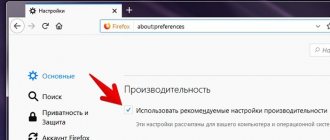MyWOT rating: what is it?
WOT is a kind of social network in which users exchange opinions about sites: can they be trusted, are the reviewers satisfied with the quality of services. These opinions settle in the internal base. To see the ratings, you will have to install a special extension in your browser.
Web Of Trust users have rated 56 million sites. This is the largest community operating on the principle of feedback.
The standard Web Of Trust window shows the security level and reputation of the site. Screenshot apple.com
MyWOT window color works on the principle of a traffic light.
Green.
Talks about the reliability of the site and its high level of security for users.
Yellow.
The company has shortcomings, but overall there shouldn’t be any problems due to them.
Red.
It is better not to visit the site, and it is dangerous to do business with the company.
The traffic light is important for users of the MyWOT rating, which means it is also important for business. Users know: ratings are given by the same people. Therefore, trust in them is higher by definition.
MyWOT rating
is a browser extension that shows users’ opinions about the company’s website and its services. If the scores are low, the extension will show a warning.
How to add WOT to Yandex browser add-ons
We can install WOT for Yandex browser by analogy with other addons for the web browser. There are no special features, we can install the plugin from the Google Extension store, but just in case, the instructions are below.
How to install the WOT extension for Yandex browser:
- Follow the link to the Google extension store.
- Click on the “Install” button, which is located on the right side of the screen closer to the top of the page.
- In the notification, we confirm the determination of our intention by clicking on the “Install extension” button.
There is a version HERE for Android. We can download Web Of Trust for the Yandex browser as an add-on using the same principle as in the desktop version of the web browser. A distinctive feature is that addon icons are not displayed next to links. After going to the page, we can see the reputation of the site.
There is also an Android application of the same developer with the same name, which we can put on the official page on Google Play.
MyWOT is negative. What happens if you ruin your rating?
Users will see this warning if the portal’s rating in MyWOT drops to red.
Screenshot from the bookmaker's website The site will block the warning banner.
The user is free to ignore it, but 90% of visitors leave the site and never return. This information was provided by Web of Trust itself, based on the behavior of users who installed the extension.
The full report differs little from the company’s page in reviews.
Screenshot from the bookmaker's website Bad situation with SEO.
MyWOT users have access to a full report on the site: with tags, reviews and additional information. The page is SEO optimized so potential customers can land on it.
Loss of some clients.
For clients, a warning about a low reputation is an unnecessary risk. People want to receive a service, and not to figure out what’s going on and whether the red rating is fair. It’s easier for them to turn to competitors.
The “red zone” brings problems to the company. To stop problems, it is better to monitor the rating at least once a month.
How the Web Of Trust plugin works
- After installation, the color identification of the site will be displayed in the search results: Green - the site is safe in all respects. Yellow – the site can harm a computer or a person. Red – the site harms a computer or a person.
- When you hover over the wot identifier, you can see information about the site.
- When you enter an unsecured site, a warning will be displayed.
- You can also evaluate sites yourself, to do this, click on the plugin icon and leave your opinion about the site.
Web Of Trust. How much profit is lost
Web Of Trust operates under review rules, so current research applies to it. Let's look at the Websitebuilder data.
22% of consumers
will not make a purchase after reading just one negative review. After three negative reviews, this figure rises to 59%.
4 or more
Negative reviews about your company or product have a 70% chance of turning off customers.
Consumers are looking for negativity.
82% of buyers specifically look for negative reviews. At the same time, users are skeptical about overly critical or superficial reviews.
To find out how many consumers a business is losing, just look at the MyWOT rating.
The problem of the “red zone” is not blocking, but user mistrust.
Something in the company's work seems suspicious, so the business loses customers. A low MyWOT rating is a consequence, not a cause.
Businesses in the “red zone” lose up to 90% of clients.
It may be an old negativity, but Web Of Trust don't know about it. Let's figure out whether it is possible to influence the situation.
Web of Trust services were compromised
An investigation by journalists from the German public broadcaster NDR revealed that the Web of Trust service was selling collected data about its users to third parties. What is Web of Trust? When faced with a site unknown to you, you risk losing your personal data, finances, or you may accidentally become a victim of malicious software distributed from such a site. To prevent such a situation, you can use any existing site rating, which will tell you before you go to an unknown page whether it can be trusted. Web of Trust ratings (literally “net of trust”) are built on the basis of the opinions of many users about a specific resource (exaggeratingly, it can be explained as follows: a red rating indicates that the resource is extremely dangerous, a green rating indicates that the resource is useful, a yellow rating indicates that the resource is It’s not like that, less popular or new sites are indicated by a transparent icon). The simplest example of use: it is enough to explain to your elderly parents that you can only go to sites with a green rating, and you will have much fewer problems with their computer.
What happened to Web of Trust? According to information from Svea Eckert, Jasmin Klofta and Jan Lukas Strozyk, journalists, through a shell company allegedly specializing in Big Data processing, were able to access data from three million website visits by German users. As it turned out, the data was collected using Web of Trust. The information was provided to the shell company as a free trial - in fact, much more data is available. Based on the materials received, journalists were able to de-anonymize about 50 people (disclosed data included diseases, sexual preferences, information about police investigations and drug use).
Information about the sale of Web of Trust data was published on German-language resources on November 1, but the response from the Web of Trust press secretary appeared only on November 3: the Web of Trust company promised to take measures to protect its users if cases of non-anonymous information were transferred. At the same time, the press secretary emphasized that the transfer of anonymous
information about the Web of Trust user to third parties is mentioned in the user agreement:
“The information we collect is aggregated, non-personal non-identifiable information which may be made available or gathered via the users' use of the WOT Utilities (“Non-Personal Information”). We are not aware of the identity of the user from which the Non-Personal Information is collected. We may disclose or share this information with third parties as specified below and solely if applicable."
Just for fun, let’s look at the official Russian version of the agreement (although it is clearly abbreviated): “WOT Services may store anonymized statistical information (not containing any personal information)”; there is no mention of the possibility of transferring this information to third parties. Screenshot
In conclusion, you can read an article in German about what exactly the Web of Trust plugin transmits to its servers. Its author also does not recommend using Adblock Plus with Ghostery (accusations against Ghostery are not uncommon) and says that many extensions from the Google Chrome catalog can collect information about you.
What is the result? At the moment, Web of Trust extensions are not available in the Mozilla and Google Chrome catalogs, and the Web of Trust application has been removed from the Play Market. Users are advised to manually remove Web of Trust add-ons from their browsers.
Update
: When analyzing the add-on, a backdoor was discovered in its code, allowing the download of a malicious script running with add-on rights.
PS I have been using Web of Trust for the last seven years (during the process of writing this article, the thought even flashed through my head to give their site a negative rating and write a corresponding comment).
As an alternative, you can use similar services from antivirus software manufacturers, for example, McAfee, Norton or Avast (I haven’t used it myself yet, I can’t recommend anything). In the comments, you can share your experience of using website rating extensions.
MyWOT rating: how to increase
The only way to influence the rating is to have users rate the company 4 and 5 stars. This is a theory, but in practice there are difficulties.
User activity.
When grading, it is important that accounts are active. Creating “dead souls” and giving the highest score will not work. Their opinion simply will not be taken into account.
Closed accounts.
You won't be able to write to users. The system shows their nicknames, but nothing more. There is no internal messenger either.
Moderator check.
To increase your MyWOT rating, a review must be reviewed by a moderator. In this regard, the rules are the same as on review sites. Suspicious ratings will not be taken into account.
Desire for quick results.
Companies that want to increase their MyWOT ranking often fall into a trap. They turn to specialized agencies, demanding quick results. A sharp jump in activity attracts the attention of moderators. Therefore, new ratings are no longer taken into account, and the company may receive a penal downgrade.
To correct your rating in Web Of Trust, you will have to look for people with an active and old account or contact a specialized agency.
How to increase your rating
The only way to improve your rating is to get visitors to leave positive reviews and give 4 or 5 star ratings. If this is your goal, here is a list of rules you need to know:
- Live users - accounts from which the site is evaluated must be constantly active. Registering an account for the sake of one review will most likely not work. The likelihood that this review will be taken into account will be small.
- Closed accounts - you will not be able to write to the people who rated it. The service only displays the names of their accounts, but there is no internal messenger.
- Moderation of reviews - before being displayed on the Web of Trust page, a review must pass a preliminary check by a moderator. All suspicious reviews will not be displayed.
- Quick results - some organizations resort to commenting services to quickly get good reviews. However, a strong increase in activity may arouse suspicion among moderators. As a result, positive reviews will no longer be taken into account, and the company will receive a penalty in the form of a rating downgrade.
Results
As you can understand, positive reviews on WOT play an important role for many users on the Internet. Our IT company also takes this indicator into account. Therefore, we will be very grateful if you leave your objective assessment, through this resource, about the quality of our website and services.
Web Of Trust - a tool for putting pressure on websites
Many users have been familiar with the Web Of Trust browser extension for a very long time. It is a good tool for avoiding websites with bad ratings and malicious content. But when it comes to your website - the view can change 180 degrees. The matter simply begins with the automatic setting of a yellow circle after an indefinite period of operation of the project, or a rating from competitors. WOT offers to re-evaluate the website on its forum - the re-evaluation occurs not on the part of the administration, but on the part of experienced users. Hoping for positive results, we draw up the application beautifully and openly and add the missing elements. And, here it is, the first comment of revaluation.
“Experienced user”: Your text is not visible, I don’t like the background - change it.
Ignoring the not very high rating of this user, we move on. The second comment states that our project has no place - it is illegal. Let me give you a small example.
The user submits a project for the sale of game keys, which is a legal entity, for revaluation. In the first minutes he had a yellow rating, and after an hour his rating dropped to red - no one has yet responded to the re-rating thread. Then I answer and give a positive rating. Experienced users get down to business and tell the owner of the project that it is illegal and it is unknown who runs it - experienced users did not even read that the store is a legal entity. And that's it - the rating is already below the plinth.
We had to recommend that the user write to the WOT SP to reset.
But the moral itself is that you shouldn’t meddle in there. As a result, we angrily write off in a cultural form that our application here is very in vain and ask for it to be deleted. Here's an example of a user's response to an owner's response about the website being an LLC:
In general, what should and should not be done if you are not ready to beat your forehead in front of the overvaluators?
1. No need to submit an application to their forum. 2. If you have enough clients, ask them in the form of a recommendation to leave feedback on this project. 3. If you managed to leave a request, write a request to delete it and reset the rating due to the inadequate assessment of the revaluators.
In general, we can be divided into two camps - for and against WOT. And even if the percentage of WOT users in the CIS is 5-8%, what is the probability that your cherished client is not included in this 8 percent? On the legal side, one can also argue for a long time, because in the Russian Federation there is an article on libel. When your scorecard flags a scam or potentially illegal item, you can sue—but against whom? We are going to ask this question to the FAS and Roskomnadzor.











